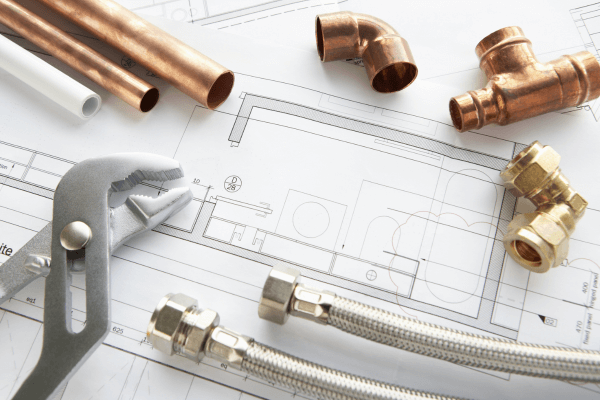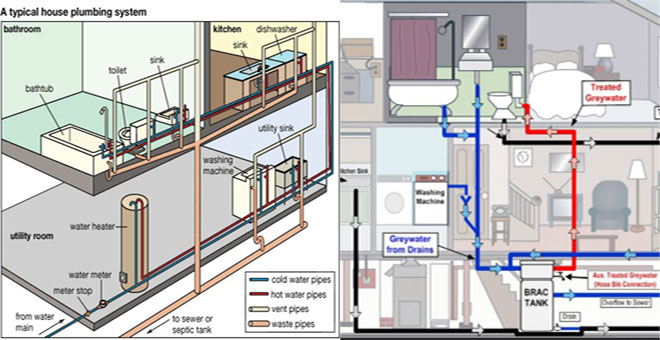The Complete Look at Your Home's Plumbing System Anatomy
The Complete Look at Your Home's Plumbing System Anatomy
Blog Article
They are making several great annotation related to Exploring Your Homes Plumbing Anatomy overall in this article followed below.

Understanding how your home's pipes system works is crucial for every homeowner. From delivering clean water for alcohol consumption, food preparation, and bathing to safely getting rid of wastewater, a well-maintained pipes system is critical for your household's wellness and convenience. In this thorough guide, we'll explore the complex network that composes your home's plumbing and offer tips on maintenance, upgrades, and managing common problems.
Intro
Your home's pipes system is more than just a network of pipes; it's a complicated system that ensures you have accessibility to tidy water and reliable wastewater elimination. Knowing its components and exactly how they interact can help you avoid expensive repair services and make certain everything runs smoothly.
Basic Elements of a Pipes System
Pipelines and Tubes
At the heart of your pipes system are the pipelines and tubing that bring water throughout your home. These can be made of numerous products such as copper, PVC, or PEX, each with its advantages in regards to longevity and cost-effectiveness.
Fixtures: Sinks, Toilets, Showers, and so on.
Fixtures like sinks, commodes, showers, and bath tubs are where water is made use of in your home. Understanding just how these fixtures attach to the pipes system helps in detecting issues and preparing upgrades.
Shutoffs and Shut-off Factors
Valves regulate the circulation of water in your plumbing system. Shut-off valves are essential during emergency situations or when you require to make repairs, allowing you to separate parts of the system without interfering with water flow to the whole residence.
Supply Of Water System
Key Water Line
The main water line attaches your home to the community water supply or a private well. It's where water enters your home and is dispersed to various components.
Water Meter and Pressure Regulatory Authority
The water meter procedures your water use, while a stress regulatory authority makes sure that water streams at a risk-free pressure throughout your home's plumbing system, avoiding damage to pipelines and components.
Cold Water vs. Hot Water Lines
Understanding the difference in between cold water lines, which provide water straight from the main, and warm water lines, which bring heated water from the hot water heater, aids in repairing and preparing for upgrades.
Drain System
Drain Pipes Water Lines and Traps
Drain pipes lug wastewater far from sinks, showers, and toilets to the sewer or septic system. Traps prevent sewage system gases from entering your home and likewise catch debris that can create blockages.
Ventilation Pipelines
Ventilation pipelines allow air right into the drainage system, avoiding suction that can slow down drain and create traps to vacant. Proper ventilation is important for keeping the stability of your pipes system.
Significance of Correct Drain
Guaranteeing correct drainage protects against backups and water damages. Routinely cleaning up drains pipes and keeping traps can avoid pricey repair work and expand the life of your plumbing system.
Water Heater
Types of Hot Water Heater
Hot water heater can be tankless or traditional tank-style. Tankless heating units warmth water on demand, while storage tanks save warmed water for prompt use.
Upgrading Your Pipes System
Factors for Updating
Upgrading to water-efficient components or changing old pipes can enhance water high quality, lower water bills, and boost the worth of your home.
Modern Plumbing Technologies and Their Benefits
Check out modern technologies like clever leak detectors, water-saving bathrooms, and energy-efficient hot water heater that can conserve cash and decrease environmental effect.
Price Factors To Consider and ROI
Calculate the in advance prices versus lasting savings when thinking about plumbing upgrades. Lots of upgrades spend for themselves via lowered utility bills and fewer repair work.
Exactly How Water Heaters Attach to the Pipes System
Recognizing just how water heaters connect to both the cold water supply and hot water distribution lines helps in diagnosing issues like insufficient warm water or leakages.
Maintenance Tips for Water Heaters
Regularly flushing your hot water heater to get rid of debris, inspecting the temperature setups, and inspecting for leakages can expand its life expectancy and enhance energy efficiency.
Usual Plumbing Issues
Leaks and Their Reasons
Leakages can happen due to aging pipes, loose fittings, or high water stress. Attending to leaks quickly prevents water damages and mold development.
Blockages and Obstructions
Clogs in drains and commodes are commonly caused by purging non-flushable products or an accumulation of oil and hair. Utilizing drain screens and being mindful of what goes down your drains can stop clogs.
Signs of Plumbing Issues to Expect
Low water pressure, slow-moving drains pipes, foul odors, or unusually high water costs are indications of prospective plumbing troubles that must be dealt with promptly.
Pipes Maintenance Tips
Regular Examinations and Checks
Set up annual pipes evaluations to capture issues early. Seek indicators of leaks, deterioration, or mineral buildup in taps and showerheads.
DIY Upkeep Tasks
Easy jobs like cleansing faucet aerators, looking for bathroom leakages making use of dye tablet computers, or protecting exposed pipes in cool climates can protect against major pipes issues.
When to Call a Professional Plumber
Know when a pipes concern needs specialist competence. Trying complex repair work without correct knowledge can cause even more damage and higher fixing costs.
Tips for Reducing Water Use
Straightforward habits like taking care of leakages promptly, taking shorter showers, and running complete tons of washing and recipes can conserve water and lower your energy costs.
Eco-Friendly Plumbing Options
Consider sustainable plumbing materials like bamboo for floor covering, which is durable and green, or recycled glass for countertops.
Emergency Readiness
Actions to Take During a Pipes Emergency situation
Know where your shut-off shutoffs lie and how to turn off the water system in case of a ruptured pipeline or major leak.
Value of Having Emergency Situation Contacts Useful
Keep contact details for neighborhood plumbing technicians or emergency situation solutions conveniently offered for fast feedback throughout a plumbing situation.
Environmental Impact and Conservation
Water-Saving Fixtures and Appliances
Installing low-flow faucets, showerheads, and toilets can considerably decrease water usage without compromising performance.
Do It Yourself Emergency Situation Fixes (When Relevant).
Short-lived solutions like making use of air duct tape to spot a dripping pipe or placing a bucket under a dripping faucet can minimize damages till a specialist plumber arrives.
Conclusion.
Understanding the makeup of your home's pipes system equips you to preserve it efficiently, conserving time and money on repairs. By following regular maintenance regimens and staying informed regarding modern pipes innovations, you can ensure your plumbing system runs efficiently for years to find.
Exploring Your Homes Plumbing Anatomy
Water Supply System
Main Water Line: This is where water enters your home from the municipal supply or a private well. Water Meter: Typically located near where the main water line enters the property, it measures the amount of water used. Shutoff Valve: It s crucial to know where this is in case of emergencies. It allows you to turn off the water supply to the entire house. Pipes and Fittings: These distribute water throughout your home. Materials can include copper, PVC, or PEX. Drain-Waste-Vent (DWV) System
Drains: Located in sinks, showers, and tubs, these carry wastewater away. Traps: U-shaped pipes under sinks that hold standing water, blocking sewer gases from entering the home. Vents: Pipes that lead from the DWV system to the outside, preventing vacuum formation and allowing gases to escape. Sewer Line: Carries all wastewater from the home to the municipal sewer system or a septic tank. Fixtures and Appliances
Sinks, Toilets, and Showers Dishwashers and Washing Machines Water Heaters Maintenance Tips
Regularly check for leaks in exposed pipes and around fixtures. Inspect the water heater annually for signs of wear. Clean drains and traps to prevent clogs and odors. Know how to shut off water to individual fixtures. When to Call a Professional
Major leaks or burst pipes Installation of new pipes or fixtures Septic tank issues Remodeling projects that involve plumbing changes Conclusion
Understanding the anatomy of your home's plumbing is key to maintaining a functional and efficient system. Regular checks and knowing when to call in the experts can save you time, money, and stress.
https://www.mavyn.com/blog/exploring-your-homes-plumbing-anatomy

I was made aware of that editorial about Plumbing Installation 101: All You Need to Know from someone on another web page. Be sure to take the time to distribute this blog post if you appreciated it. Many thanks for going through it.
Apply Now Report this page